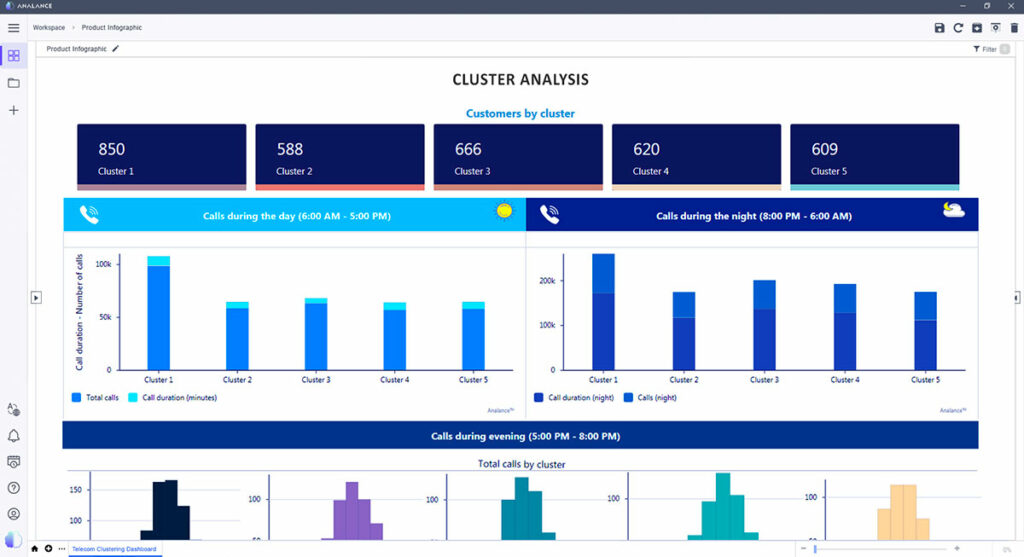
The telecommunications space plays a critical role in facilitating modern communication, especially during these uncertain times. With all the social distancing measures and quarantine restrictions, it has become essential to keep people and businesses connected to each other—be it with their families, colleagues, or customers.
This surge in demand for connectivity has transformed the telco landscape in numerous ways. People are spending more time at home and as a result, customer needs are changing, network traffic and data are surging, and data analytics has been pushed to the forefront—addressing the need for data-driven decision making and crisis responses.
The shift from commercial to residential
According to the International Finance Corporation, the telecom sector has remained essential during the pandemic in at least three different ways: providing much-needed connectivity for businesses, making remote work possible, and keeping everyone informed of critical news and updates.
With more and more people working from home, there have been spikes in data traffic and an increased use of broadband services. In fact, there has been a 200% increase in landline and wireless voice traffic during peak times, plus a 250% surge in conference calling. As a result, a major internet provider in Canada is accelerating rural internet rollout.
On top of that, wireline home traffic in Canada has increased by 48.7% for downloads and 69.2% for uploads. Interestingly, the increase in overall traffic is most visible during what used to be non-peak hours. With people working online and on demand, near-peak hours have become much more evenly distributed, resulting in longer periods of high utilization. To illustrate: all days of the week now look similar in terms of network and internet traffic.
We’re also seeing surges in video conferencing traffic, with increases of as much as 400%. Even Google Meet’s daily usage is more than 25 times higher compared to January. And while network traffic has shifted from the office to the home, there is still an increase in corporate bandwidth demand due to added VPNs for work-from-home employees.
Many telecom players—from infrastructure providers to operators—are benefiting from the surges in data traffic. But what does this shift from business to residential use really mean for telcos?
The impact on telecommunications
While the benefits of increasing bandwidth demand are shared across the industry value chain, there are a few things that telcos should keep in mind, even after this pandemic is over. Knowing the full impact of the pandemic can give way to proactive telecommunications solutions such as data analytics.
1. Customer habits and preferences are changing.
Telcos should make sure to keep track of shifts in their target markets. For example, as a result of global lockdown mandates, most high-value enterprise customers such as schools, universities, and restaurants have stopped operations. Customers from this segment may request a temporary suspension of services or payment holidays. Whereas the individual consumer, particularly from the higher-income group, are showing higher data consumption and may show interest in unlimited plans.
What’s more, because of the high reliance on connectivity, customers at home expect telcos to be flexible and responsive to their needs. But succeeding in this area will also provide boosts to company reputation and customer satisfaction. Telcos who can support the new normal will definitely earn customers’ trust.
Make use of advanced analytics and segmentation techniques to identify customers most likely to be affected by critical issues. This will allow you to enable proactive customer care and provide solutions such as flexible payment options or reduced bandwidth caps.

2. Employees are working remotely.
On top of catering to the needs of work-from-home customers, telecom organizations will need to think about how best to support their remote workforce.
Movement may be limited for your engineers and field technicians, and their productivity could be affected. The slowdown of the global economy means customers are less likely to commit to new contracts or devices, and this may affect the morale of your retail customer service representatives, salespeople, and distributors. What’s more, call centers should expect a surge of calls and even complaints from people relying on connectivity to work and communicate.
These challenges highlight the need for a robust omnichannel process and experience. To ensure that your customers enjoy a truly digital experience, leverage data warehousing and telecom analytics to create a 360-degree view of your customers, products, and services.
3. There is a higher risk of security breaches.
Despite all the benefits of remote working, it’s important to remember the security and infrastructure risks that come with it. The services enabled by the industry, such as messaging capabilities and other connectivity options, present many opportunities for threats—from direct cyberattacks to indirect malware intrusions.
The telecommunications space not only operates critical connectivity infrastructure, but also generates and stores massive amounts of high-quality, sensitive data on complex networks that act as gateways to other businesses. As people move away from city centers, telco organizations need to prepare themselves for any possible security hurdles that may come with this transition.
Stay on top of cybersecurity threats. Predictive analytics can help you monitor and address potential security breaches for maximum protection.
Advanced analytics solutions at the forefront
There is a lot of uncertainty and change present these days, and in order to survive, most organizations resort to a reactive approach—addressing challenges only as they come up. The telco industry should account for all these changes in bandwidth demand, customer habits, and workforce and infrastructure needs by adopting a proactive, data-driven approach.





